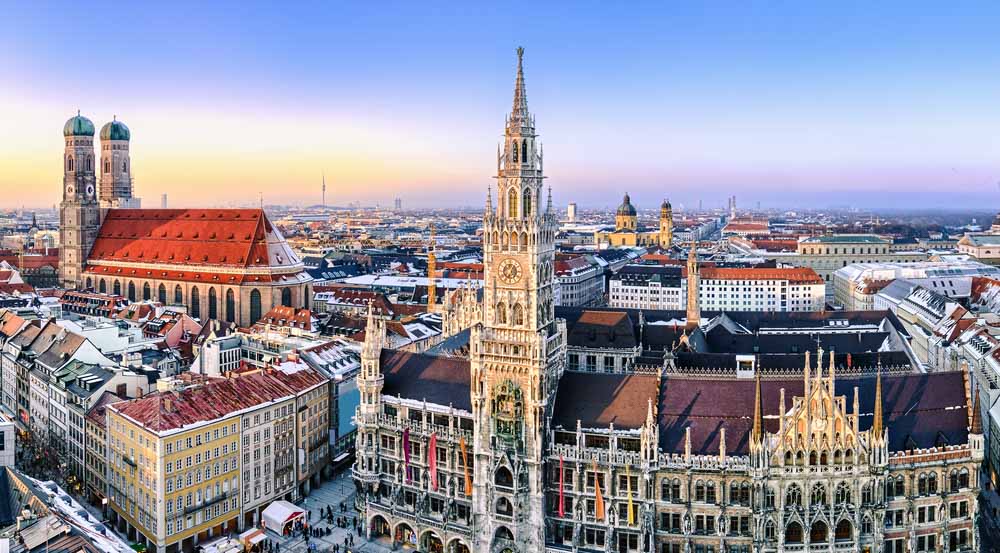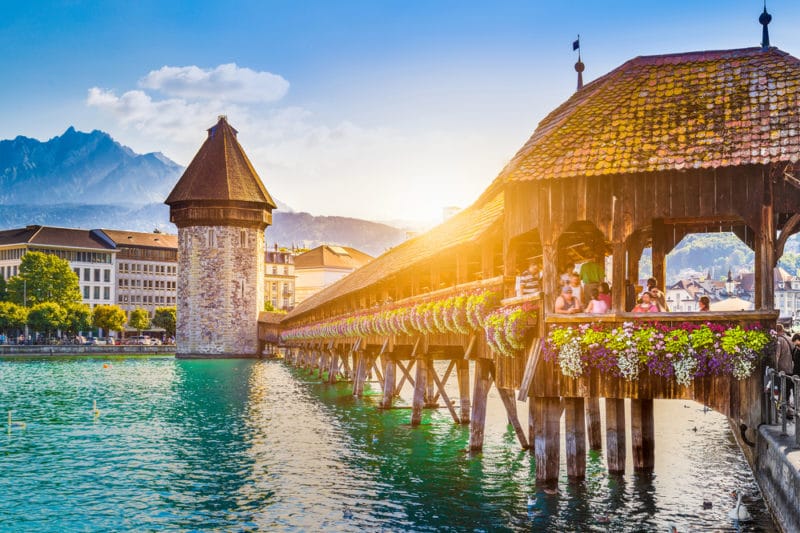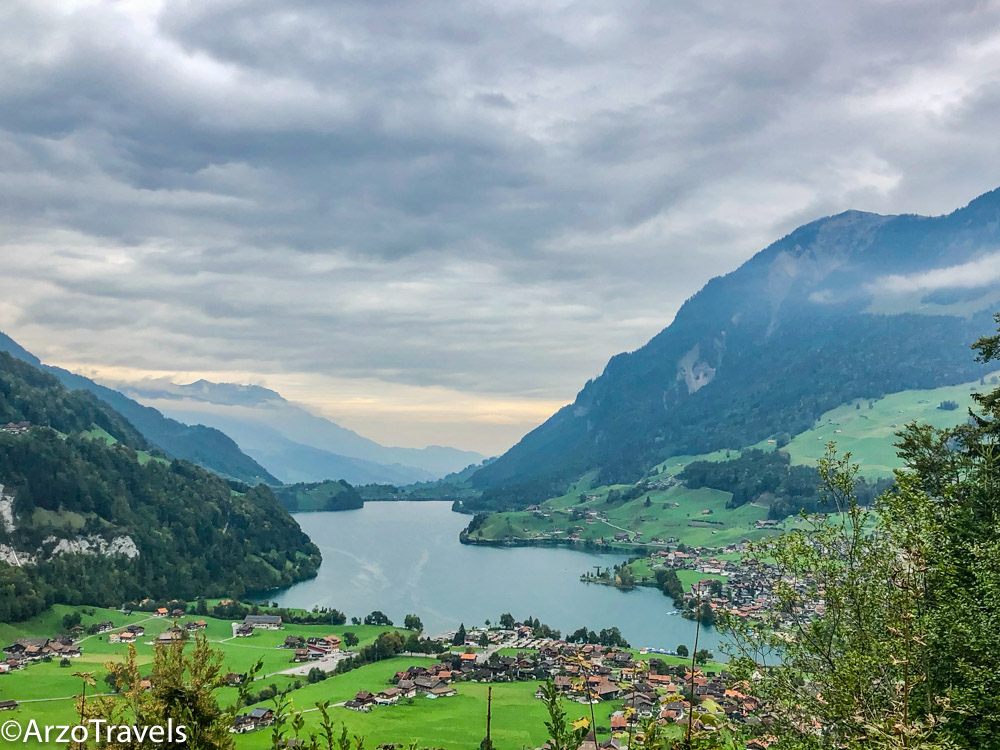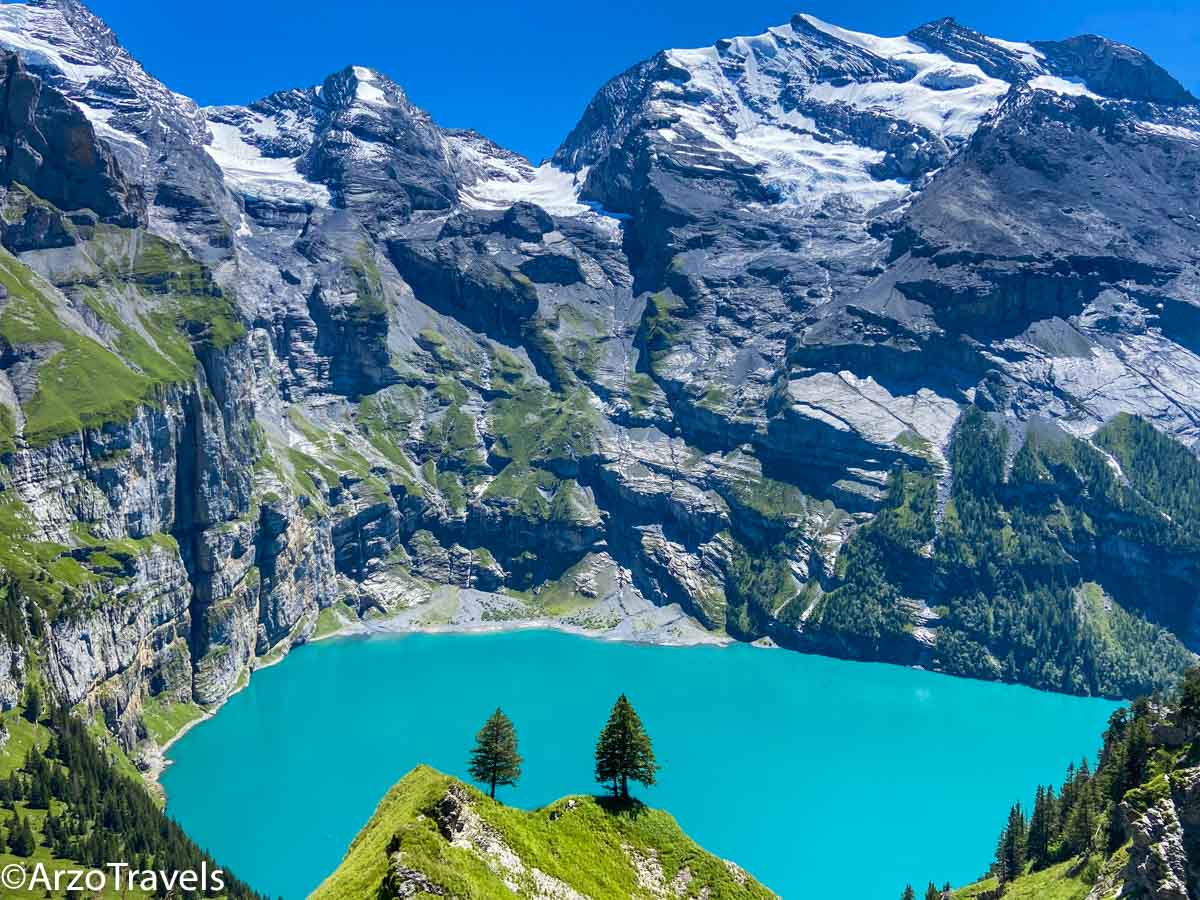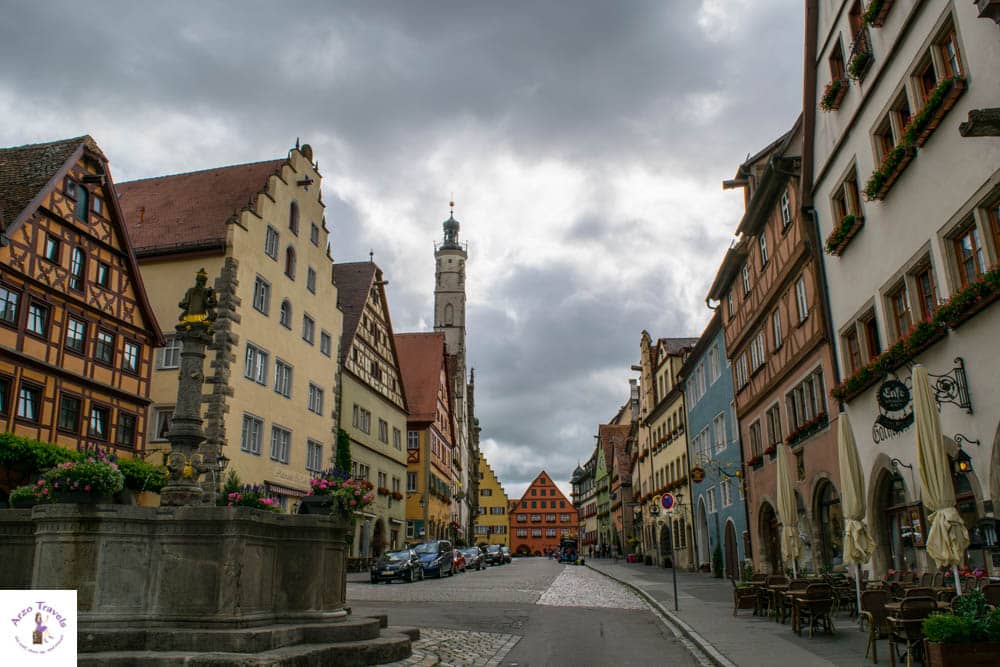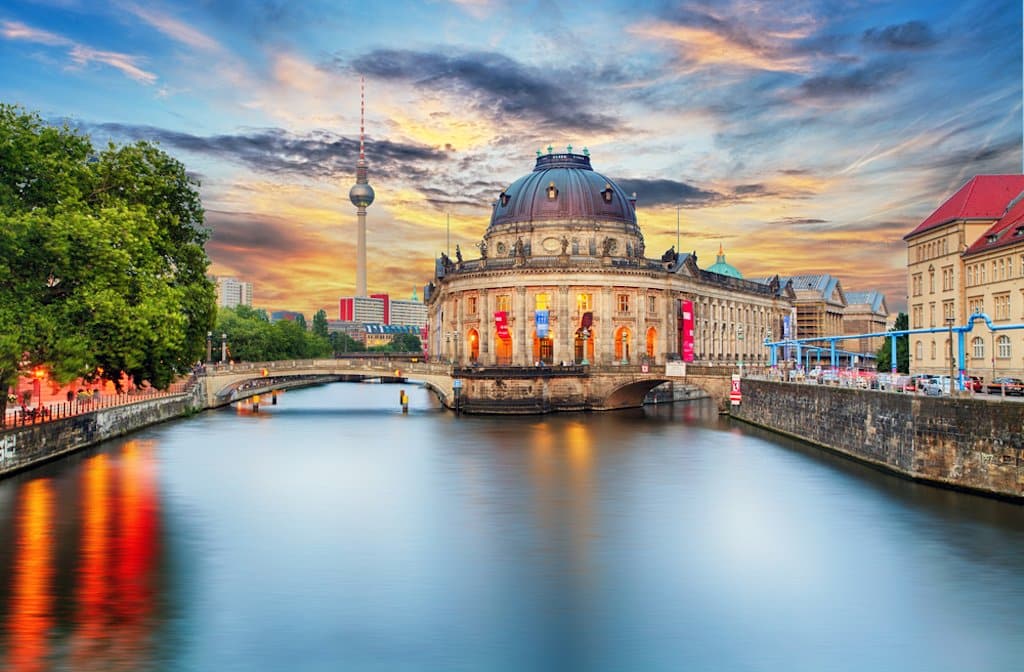HOW TO SEE GERMANY AND SWITZERLAND IN 7-14 DAYS
Two of the most interesting countries to visit are surely Germany and Switzerland. Both offer diverse attractions and activities – I am from Germany, have lived basically all my life, and I still discover new places daily. And Switzerland – wow, Switzerland is just beyond amazing.
So, I see the appeal of visiting these destinations. However, planning a Germany and Switzerland itinerary can be overwhelming. So, I am happy to help you plan your trip, so you can make the most of your valuable time.
Whether you visit Germany and Switzerland for 7, 10, or 14 days, this itinerary for Switzerland and Germany will help you plan your trip.
Disclaimer: This post contains affiliate links. This means I might earn a small commission when you buy a product (at no extra cost to you) after clicking on my link. More about it here.
TRAVEL TIPS FOR YOUR GERMANY AND SWITZERLAND ITINERARY
So, as a German and Switzerland enthusiast, I share my tips for having an amazing time in Switzerland and Germany.
HOW TO GET AROUND SWITZERLAND AND GERMANY
Driving in Germany
- The streets are mostly well-paved and safe, and people drive well. However, there are a lot of construction projects on the motorways, which often result in traffic jams.
- There are many motorway streets without speed limits, but many do have a speed limit you should stick to (speed cams are placed throughout the country). There are no tolls for cars in Germany.
Public Transportation in Germany
- Getting around via trains and buses is actually easy and, overall, okay in Germany. The trains are not always on time, some connections might be canceled, and it isn’t cheap. However, compared to places that have no train service, I guess we Germans should consider ourselves lucky.
Driving in Switzerland
- Mountain streets are usually a bit more challenging, but overall, I looooove driving in Switzerland. The roads are mostly well-paved and safe, and people drive well.
- Check out my post with driving tips for Switzerland.
Public Transportation in Switzerland
- You cannot go with when choosing public transportation in Switzerland.
- Trains and buses are punctual and reliable. And the window views are out of this world.
TIP: If you plan to get around via public transportation, check out the Swiss Travel Pass, which is perfect for tourists.
- There are different Swiss Travel Passes available regarding flexibility and duration. Flexible passes allow you to use the pass for a certain amount of days within one month, or the regular, more affordable option, which means you have to use the pass on consecutive days of travel.
- Yes, the Swiss Travel Pass is quite expensive but it will pay off.
- You can use buses and trains without any extra costs.
- Also, most boat cruises and some mountain excursions are included.
- The Swiss Travel Pass also covers most museums and entrances to castles.
- The great thing about it is that you never have to worry about finding parking spaces and instead use buses and trains.
- Click here to find the rates for a Swiss Travel Pass.
SWITZERLAND AND GERMANY ITINERARY FOR 7 DAYS
Travel Time Around 12 Hours in Total
With only one week in Switzerland and Germany, I focus on destinations that are very close to each other, so travel time is reduced. But these places are still stunning, so there is no compromise on the beauty, just on travel duration. However, to see some of the best places these countries have to offer, you will need to travel to some degree.
MUNICH – 1-1,5 DAYS
Munich is a perfect starting destination – with a big airport and many trains arriving in Munich, it is easy to start international travel here.
From lakes, and parks to museums, historical sites, and shopping opportunities, Munich has something for everyone. It is one of Germany’s biggest cities, so there are tons to do and see, but in this case, I suggest spending only 1 or 1.5 days in Munich.
THINGS TO DO IN MUNICH
- Visit Marienplatz
- Rest at English Garden
- Visit Munich Residenz Palace
- Check out Viktualienmarkt
WHERE TO STAY IN MUNICH
LUXURY: For a luxury hotel with beautiful rooms and excellent on-site dining, stay at the Mandarin Oriental Munich. It is located right in the center of Old Town. ➡️ BOOK YOUR STAY AT MANDARIN ORIENTAL MUNICH
MID-RANGE: For a mid-range option, Hotel Mercure München City Center is a popular choice. It is centrally located and offers most of the facilities you’ll need for a weekend stay. ➡️ BOOK YOUR STAY AT MERCURE MÜNCHEN CITY CENTER
MID-RANGE: Another good choice for mid-range accommodation would be King’s Hotel First Class. This hotel has modest rooms but is located in the city’s heart and close to the train station and city landmarks. ➡️ BOOK YOUR STAY AT KING´S HOTEL FIRST CLASS
NEUSCHWANSTEIN CASTLE & FÜSSEN – 1 DAY
Then, early in the morning, continue your journey. The crowds will come, so early in the morning is really the best time to leave Munich.
One of the most beautiful and gorgeous pieces of architecture must be the Neuschwanstein Castle, south of Munich. However, it is very popular amongst visitors from all around the world, so be prepared to rub shoulders with many of them.
Spend the afternoon and evening in the cute town of Füssen and have dinner here before continuing your journey to Switzerland.
Tip: Since prices in Füssen (which are quite high for Germany) are still cheaper than in Switzerland, I suggest spending the night here.
Even with so few days in Germany, it is a perfect day trip as it is also close to the Swiss border.
THINGS TO DO IN/AROUND NEUSCHWANSTEIN CASTLE & FÜSSEN
- Get to Marienbrücke
- Visit Neuschwanstein Castle
- Walk around Alpssee (lake)
- Visit Hohenschwangau Castle
- Learn at the Museum of the Bavarian Kings
- Check out more tips for Schloss Neuschwanstein here
You will have to skip many gorgeous places in Germany. However, in Switzerland, you will find out what “beyond breathtaking“ scenery really means.
LUCERNE – 1 DAY
Traveling from Füssen to Lucerne, whether by public transportation or car, will take several hours. One day in Lucerne is not a lot, so make the most of it by not arriving late.
Lucerne is one of the prettiest towns in Europe. Whether you come here in winter or during any other season, this place doesn’t disappoint.
Nestled between the Swiss Alps, this town offers the chance to have a city trip while being surrounded by stunning nature. That is also why I preferred Lucerne over Zurich for this itinerary.
After exploring the old town (and the famous Chapel Bridge) and marveling at the unique and historic buildings, you can add a mountain excursion for the afternoon.
THINGS TO DO IN LUCERNE
- Explore the old town
- Pass Chapel Bridge
- Visit the Lion Monument
- Enjoy the Views from Mount Rigi
- Spend time on Mount Pilatus
- Here are more Lucerne travel tips
WHERE TO STAY IN LUCERNE
Luxury: Schweizerhof Lucerne – If you want to book a luxury hotel in Lucerne, I recommend this beautiful 5* hotel, right in the heart of Lucerne. ➡️ Book your stay at Schweizerhof Lucerne here.
Mid-Range: Hotel des Alpes – I stayed at Hotel des Alpes. The room view was amazing (and included views of the Chapel Bridge and Mount Pilatus). ➡️ Book your stay at Hotel des Alpes here.
Budget: The Bed + Breakfast – If you want to stay in a budget hotel, have a look at this B&B. Some rooms have a shared bathroom, and some have a private one. ➡️ Book your stay at The Bed & Breakfast here.
INTERLAKEN / JUNGFRAU – 3 DAYS
Then it is time to head to the final destination – may I introduce you to my most favorite area in the world?
The train ride, or drive, from Lucerne to Interlaken is scenic. If you take the train, make sure to take the Luzern-Interlaken Express (not all train rides have the same route, and the Express trains are normally the most scenic ones).
If you road trip, plan in some time at Brüning Pass and have a cold drink while parking your car and enjoying the views.
Then spend the rest of your time in one of the most unique destinations in the world, where you will have an abundance of stunning lakes, mountain peaks, cute towns and villages, and more. Yes, I meant Interlaken.
There is surely no shortage of activities. And while Interlaken itself is cute, the scenery is actually what makes this place amazing.
I have spent many weeks in Interlaken – and I am sure, I will never tire. Check out my post on the top activities to do in Interlaken for more tips.
THINGS TO DO IN INTERLAKEN IN 4 DAYS
- Visit Oeschinensee (see picture) above
- Explore Thun and Lake Thun
- Go up Brienzer Rothorn and Lake Brienz
- Explore Lautrebrunnen
- more tips for Interlaken
WHERE TO STAY IN INTERLAKEN
I suggest staying in Interlaken because its central location allows to you get around easily.
LUXURY: VICTORIA JUNGFRAU GRAND HOTEL & SPA – The most luxurious hotel in Interlaken is the Victoria Jungfrau Grand Hotel & Spa. I have not stayed there myself, so I can only repeat what I heard: This hotel is amazing. This is probably the best pick if you are looking for a fancy place in Interlaken. ➡️ Book your stay at Victoria Jungfrau Grand Hotel & Spa here
MID-RANGE: HOTEL DU NORD – For your stay in Interlaken, I recommend this hotel – Hotel du Nord – which is centrally located and is quite nice. It is one of my favorite accommodations for your 5-day Swiss itinerary. ➡️ Book your stay at Hotel du Nord here
BUDGET: BACKPACKERS VILLA SONNENHOF – If you are on a budget, I recommend staying in Backpackers Villa Sonnenhof next to the Höhenmatte. It is not the cheapest hostel but definitely worth the money and one of my all-time favorite hostels. ➡️ Book your stay at Backpackers Villa Sonnenhof here.
With that itinerary, you will see some of the most beautiful places in Germany and Switzerland in only 7 days.
10 DAYS IN SWITZERLAND AND GERMANY ITINERARY
- Munich – 1,5 Day
- Neuschwanstein Castle & Füssen – 1 Day
- Eibsee or Rothenburg ob der Tauber – 1 Day
- Zurich – 1 Day
- Lucerne – 1,5 Day
- Interlaken – 3,5 Days
Travel time is around 12 hours (with Eibsee) in total or 17 hours (Rothenburg ob der Tauber)
ROTHENBURG OB DER TAUBER – 1 DAY
Rothenburg ob der Tauber is north of Munich and also further away from Switzerland. However, this detour is actually well worth it.
Rothenburg is one of the best-preserved medieval towns in Germany. What this actually means is that the old buildings are picture-perfect, and since Rothenburg is small, you can do quite a lot in half a day or a full day.
If you do not want to take the detour (which is somehow understandable since it takes about 2,5-3 hours one way), then I suggest heading to Eibsee, which is Germany´s prettiest lake close to Neuschwanstein Castle.
THINGS TO DO IN ROTHEBURG OB DER TAUBER
- Stroll the old town
- Walk Around the Old Walls
- Visit the Christmas Museum
- Have a Coffee at Cafe Einzigartig
- Check out more travel tips for Rothenburg
WHERE TO STAY IN ROTHENBURG OB DER TAUBER
If you stay overnight in Rothenburg, check out these hotels.
MID-RANGE: Hotel Reichs-Küchenmeister – this is a well-rated hotel which is perfectly located in the old town of the city. ➡️ BOOK YOUR STAY AT HOTEL RECIHS-KÜCHENMEISTER
BUDGET: Hotel Gasthof zur Linde – On my second visit, I stayed at this 3-star property near the gates of the old town. Within a few minutes, you are right in the heart of Rothenburg. It is a quite simple place, but it was good enough for me. ➡️ BOOK YOUR STAY GASTHOF ZUR LINDE
EIBSEE & ZUGSPITZE – 1 DAY
Located right at the foot of Zugspitze mountain, it is a perfect place to explore what the German Alps have to offer.
Just walk around the Eibsee and have a picnic.
You have amazing mountain peaks in Switzerland but if you want to enjoy views from Germany´s highest mountain, Zugspitze, then you can also take a cable car to get up or hike up.
Tip: If you visit Eibsee and Füssen/Neuschwanstein Castle, I suggest visiting Eibsee first and then going to Neuschwanstein Castle.
ZURICH – 1 DAY
In Switzerland, I suggest adding Zurich to your itinerary for one day.
It will be the first stop in Switzerland, coming from Germany. While I normally recommend staying 2 days in Zurich, one day is good to see the main sights.
Though Zurich is not the capital of Switzerland, it is the busiest and biggest city with the most expensive shopping street in the world (Bahnhofstrasse), a beautiful lake, and an old town that you should not miss during your day there.
THINGS TO DO IN ZURICH:
- Stroll Bahnhofsstrase
- Swim in Lake Zurich (and do a boat Cruise)
- Enjoy the views from Lindenallee
- Explore the Old Town
- Find more travel tips for Zurich here
After that, head to Lucerne and follow the itinerary I talked about for 7 days.
🛏️ WHERE TO STAY IN ZURICH
Luxury: Baur au Lac – Zurich has some great luxury hotels that are amazing for getting spoiled and enjoying life. Baur au Lac is one of the best-rated luxury hotels close to the city center. ➡️ Book your stay at Baur au Lac here.
Mid-Range: The Glärnischhof by TRINITY – For more budget-friendly accommodation, check out this 4-star hotel is one of the best-rated mid-range hotels close to the city center, right next to the famous Bahnhofstrasse. ➡️ Book your stay at The Glärnischhof by TRINITY here.
Budget: Oldtown Hostel Otter – There are not many budget hotels in Zurich. This is a good-rated hostel in Zurich. I stayed here once, and for a hostel, it actually was quite good, especially because of its great location. ➡️ Book your stay at Oldtown Hostel Otter here.
GERMANY AND SWITZERLAND FOR 14 DAYS
This 2-week itinerary will allow you to visit even more places in Germany, as well as in Switzerland. So, compared to the 10-day itinerary, you will have 2 new destinations and can spend 2 full days in Lucerne and Munich.
Also, you can give yourself more time to enjoy the actual traveling, as road tripping and train travel (at least in Switzerland) give you the option to enjoy the breathtaking scenery, and you can take some rest and just soak in the beauty.
- Berlin – 1,5 Days
- Munich – 1,5 Days
- Neuschwanstein Castle & Füssen – 1 Day
- Eibsee or Rothenburg ob der Tauber – 1 Day
- Appenzellerland – 1 Day
- Zurich – 1 Day
- Lucerne – 2 Days
- Interlaken – 3,5 Days
BERLIN – 1,5-2 DAYS
Berlin is new on the 2-week itinerary. Germany´s capital is an interesting place to visit. But it is located quite far up north, and with 10 days in both countries, you would stress yourself out too much by adding it to a shorter itinerary.
However, with 14 days, start your itinerary in Berlin and spend 1,5-2 days there.
It is quite a big city, but thanks to good public transportation, you can get around easily and see some of the best places in a short time.
Then either take a train to Munich or drive south (it is a rather long train ride, which takes around 6 hours) and stop in Rothenburg first before continuing your trip to Munich.
Tip: If you plan to rent a car, I suggest renting the car after your time in Berlin and not driving in the city itself. Even though taking a plane from Berlin to Munich may sound better at first, you will not save tons of time, considering that the airport in Munich is very far from the city center, and then add in all the check-in times, etc.
THINGS TO DO IN BERLIN
- Visit Brandenburger Tor
- Head to Reichstag
- Visit the Holocaust Memorial
- Check out…Checkpoint Charlie
- Stroll Gendarmenmarkt
- Here are more travel tips for Berlin
WHERE TO STAY IN BERLIN
LUXURY: Treat yourself to the ultimate 5-star luxury with a stay at Berlin’s famous Hotel Adlon Kempinski Berlin. Located close to the iconic Brandenburg Gate, you won’t find better facilities anywhere else – there’s even an exquisite double Michelin star restaurant and shopping arcade for your convenience! ➡️ BOOK YOUR STAY AT HOTEL ADLON HERE
MID-RANGE: Grimm’s Hotel am Potsdamer Platz, right in the heart of bustling Berlin is just a short stroll away from the vibrant shopping and business hub surrounding the iconic Potsdamer Platz Square. ➡️ BOOK YOUR STAY AT GRIMM´S HOTEL AM POSTDAMER PLATZ HERE
BUDGET: Discover the charm of Berlin at Jasper’s Boutique Hotel, located just a short stroll away from the historic Berlin Wall Memorial! Offering express check-ins, cozy rooms, an in-house restaurant, and a lively bar. ➡️ BOOK YOUR STAY AT JASPER´S BOUTIQUE HOTEL HERE
APPENZELLERLAND – 1 DAY
Appenzellerland has become popular because of the stunning mountain restaurant, the Aescher. However, it is not on many Switzerland itineraries though it should be.
The Aescher is a mountain restaurant located on Ebenalp Mountain in the Alpstein area.
It is a unique destination, and it is quite easy to get there (okay, only by cable car, if you hiked it would take 1-2 hours but it is quite steep).
On your way up – or down – make sure to also see Seealpsee (a beautiful mountain lake) and rest before continuing your journey.
You can either stay overnight at a guest house, which is located even higher than the Aescher, or you can book a room in the cute and colorful village of Appenzell.
I have added Appenzellerland to this itinerary because the landscape is different from many other places in Switzerland. Personally, it felt that no hills and mountains are greener and lusher than here, which makes driving here even more fun.
From there, continue your trip to Zurich and add the places mentioned above.
THINGS TO DO IN APPENZELLERLAND
- Have lunch at the Aescher
- Hike Up Ebenalp Mountain Guest House
- Rest at Seealpsee
- Explore the Appenzell town center
- More travel tips for Appenzellerland
CREATING A PERFECT SWITZERLAND & GERMANY ITINERARY
As you can see, you can combine your Switzerland and Germany trips quite easily. That surely will not be the most budget-friendly trip you can take, but it is a trip to remember!
And if you can make it happen, try to visit Switzerland and Germany for 14 days or at least 10 days.
Thanks to good public transportation in both countries, you can just lay back and enjoy window views while getting around, or you can rent a car and explore both countries by car. Either way, it surely will be fun!

